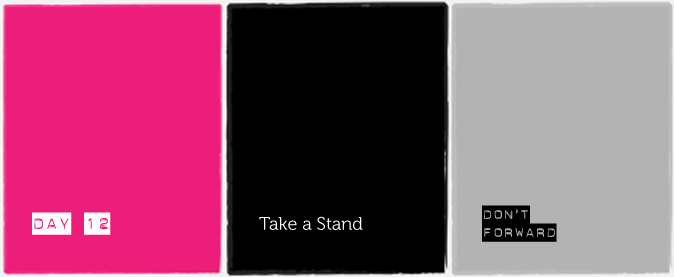
What did you do with it? Did you pass it on? Did you press delete or report it? Did you think about how you were implicated in the violence once you held that image in your hands?
 Many people think that it's OK to forward material like this. They argue that the damage is already done and that they are just doing what everyone else has done already. But every act of passing it on is another act of violence.
Many people think that it's OK to forward material like this. They argue that the damage is already done and that they are just doing what everyone else has done already. But every act of passing it on is another act of violence.
What does forwarding mean for the victim who has to live with the knowledge that her violation and trauma is being distributed and viewed by others? Each viewing replicates the original violence, perpetuating harm.
|
E
|
There are many ways to bear witness. When you see, you affect what is being seen, and it affects you. How do you witness violence against women? Are you a spectator, interested only to be shocked or entertained? Or are you engaged in creating a more just and equal world that is free from violence against women? |
The key differences between documenting violence and forwarding violence lie in how we locate ourselves in the act and question our role in perpetuating or ending it, and what action we take after we witness.
|
1. Take the pledge by adding your name.
|
2. Make it known.
Wear one of the "I don't forward violence" badges found here and here.
|
Put it on and start a conversation! Better yet, make more badges and hand them out.
Show solidarity with women and girls who have experienced violence. Don't forward violence. Instead, disseminate calls to stop it.
- Log in to post comments
